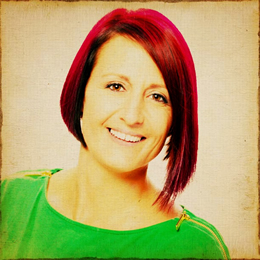Borderline Personality Disorder
What is Borderline Personality Disorder?
Borderline Personality Disorder (BPD) is a mental illness that typically leads to chaos in the relationships, self-destructive behaviors, and intense emotional pain for the person with BPD. BPD has been called an "emotional intensity disorder" and people with the disorder may experience emotions as if their emotional volume is always turned up full blast.
BPD is characterized by a pervasive pattern of unstable relationships, self-image, emotions and impulse control. Individuals with BPD may present with a combination of difficulties that often include depression, anxiety, post-traumatic stress disorder symptoms, substance abuse, self-injury, and/or eating disorders. These conditions can manifest themselves through recurring fears of abandonment, angry outbursts, identity disturbances, self-damaging behavior or suicidality, intolerance of being alone and/or chronic feelings of emptiness or boredom.
Causes of BPD
As with other mental illnesses there are biological and environmental factors that I believe contribute to developing BPD. The biological component of BPD includes the genetic traits you inherit from your parents, as well as your temperament. If your parents or other blood relatives deal with mental illness, you are likely genetically predisposed to developing a mental illness yourself. This biological component is thought to be about 68% of the cause of BPD.
The environment you grow up in may also be a factor in developing BPD. The majority of people diagnosed with BPD have a childhood history of abuse (physical, emotional, sexual) and/or neglect. The main environmental element that is believed to contribute to developing BPD is an "invalidating environment," that is, an environment where the emotional, social, and physical needs of a child are not met, or are met inconsistently.
How do I know if I have BPD?
It is important that you see a professional (a therapist, psychologist, psychiatrist, clinical social worker) who is experienced in working with personality disorders in order to get an accurate diagnosis. BPD is sometimes a difficult diagnosis to make because the symptoms of BPD overlap to some degree with symptoms and presentation of mood disorders (Bipolar II disorder in particular), substance abuse disorders, and Post Traumatic Stress Disorder. In addition, it is common for people with BPD to also have depression, anxiety disorders, panic disorder, eating disorders, substance abuse disorders, and post-traumatic stress disorder.
Some clinicians are not comfortable talking to their clients about the possibility of a BPD diagnosis. This is the result of outdated and inaccurate beliefs about BPD: beliefs about how difficult BPD clients can be to work with, and beliefs that it is not possible to treat BPD.
How is BPD treated?
The positive news about a BPD diagnosis is that treatment can be very successful in reducing and eliminating the symptoms of the disorder and significantly improving a person's quality of life! The front line of treatment is therapy, and the therapy must be specific to the treatment of BPD. Medications are often effective in decreasing the symptoms of depression and anxiety that typically accompany BPD, and can help improve sleep, decrease impulsive behaviors, and improve a person's ability to think clearly and rationally. However, only therapy can treat the symptoms specific to Borderline Personality Disorder.
At least half of the clients who start therapy at Tidelands have received therapy and psychiatric treatment in the past, sometimes for years, without being told about a possible BPD diagnosis. I am extremely careful to explore this diagnosis and others thoroughly with clients so that whatever is diagnosed fits with your experience of symptoms. The bottom line is that I work with you to reduce the painful symptoms you are experiencing no matter what label we put on them. A diagnosis is only a useful tool that helps understand a cluster of symptoms. I treat the symptoms, not the diagnosis.
At Tidelands Counseling I integrate Cognitive Behavioral Therapy or CBT with Dialectical Behavioral Therapy (DBT) and Schema Therapy approaches. Both DBT and Schema Therapy are forms of Cognitive Behavioral Therapy developed specifically to deal with complex mental disorders such as personality disorders.
This integrated approach helps you look at situations in your life and explore how what you are thinking about a particular situation or event influences your feelings and behaviors, and how your emotions and behaviors influence your thoughts. I help you identify problematic thoughts and behaviors and learn more useful and functional ways of interacting with your world. I can help you develop a toolbox of skills: relaxation; distress tolerance; mindfulness; communication; self-care; social skills; and more... all of which will help you to reduce the amount of emotional distress and self-destructive behaviors you experience and improve your ability to have long-term healthy and supportive relationships.
Can I Recover From Borderline Personality Disorder?
I have seen many clients successfully learn to manage their symptoms and live a happy, productive, meaningful, chaos-free life. Listen to one of my clients, Erin Smith, share her story of healing and recovery on Free Your Mind Projects Radio Show from May 11, 2013.
Erin Smith on Free Your Mind Projects Radio Show, May 11, 2013
 |
Click Here to (Be patient through the two minutes of introductory information.) |
| Erin Smith |







